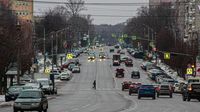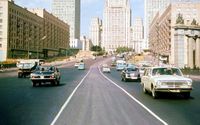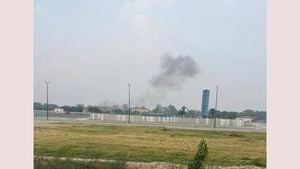Russia is taking significant steps toward reshaping its transportation policies, with the "Transport Strategy until 2030" spotlighting the urgent need to bolster public transport and curtail the usage of private vehicles. While current measures primarily focus on megacities, experts suggest these strategies may stretch to wider regions as authorities grapple with growing automotive congestion. SM.News reported on March 17, 2025, the overwhelming number of cars is leading to severe road network overload and insufficient parking spaces, compelling city administrations to make car ownership less appealing.
To achieve these goals, various regulatory measures are being introduced, including the implementation of paid parking systems, increased taxes, restricted access to certain urban zones, and the reduction of available parking spots. Such actions aim to incentivize the public to utilize public transport options, which remain underdeveloped, especially beyond urban centers. Despite some improvements, many rural and suburban areas lack sufficient alternatives, leaving residents reliant on personal vehicles.
"The development of public transport continues, but its volume is often inadequate," state various articles including input from experts. The situation is somewhat less dire for residents of larger cities who have access to metro services, trams, and electric buses. Acknowledging the challenges, Mikhail Blinkin, Director of the Institute for Transportation Economics, pointed out in 2016 the complications surrounding car ownership, especially emphasizing Moscow's unsuitability for motor vehicles. He posed the question of when the Russian public might cease opposing the inevitable transition from personal vehicles.
Interestingly, the current discourse also raises concerns about the future potential of restrictions on electric vehicles alongside traditional combustion-engine cars. Experts from 32cars have not ruled out this scenario, acknowledging increasing environmental awareness and the necessity for transportation to shift its focus.
Critics argue this formidable transition will potentially leave small towns and rural communities stranded without adequate public transportation, intensifying existing inequities. One resident from the rural district remarked, "For people living far from urban areas, personal vehicles will still be the primary means of transport for many years to come."
Meanwhile, cities are increasingly compelled to enact measures aimed at deterring personal vehicle use. The tactics employed comprise raising operational costs, enforcement of fines, and the restriction of parking near homes and businesses. "How can someone manage their daily errands without sufficient public transport options?" questioned another resident, underscoring the need for comprehensive transit solutions.
Despite the increasing expenses tied to travel, fuel, and maintenance, many drivers remain reluctant to give up their cars. The sentiment is clear: the convenience and autonomy afforded by personal vehicle ownership remains deeply ingrained within the culture. Reports indicate, "Even with the rising costs and limitations, the car is still viewed as indispensable by numerous drivers."
Public sentiment reflects both apprehension and hesitance as discussions surrounding transportation strategies evolve. While proponents of reducing personal vehicle usage cite environmental and urban enhancements, critics contend such measures target personal freedoms and fail to account for the realities faced by non-urban populations. The government faces the formidable task of balancing ecological responsibilities with practical mobility needs.
Further public discourse will likely probe the effectiveness of these strategies. Can urban centers realistically accommodate increased public transportation usage without investment and comprehensive planning? How will rural areas adapt to potential limitations? The general view is cautionary optimism; stakeholders recognize the necessity for progress but underline the need for equitable solutions.
Finally, as the clock continues to tick toward 2030, society stands to witness whether these ambitious proposals will transform transportation dynamics across Russia. The resulting changes could set precedent, not just locally but potentially influencing global environmental policies aimed at reducing urban congestion. With anxious eyes on the horizon, cities may soon redefine mobility and prove the adaptability of modern transportation methods, intertwining public welfare with ecological integrity.






